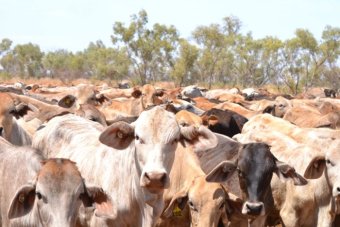 Australia contributes information to Agri Benchmark's annual report, which takes into account 90 per cent of the world's beef production.
Australia contributes information to Agri Benchmark's annual report, which takes into account 90 per cent of the world's beef production.The 2013 report shows beef producers all over the world are struggling to stay profitable in the long term, but that Australian, American, Chinese and European beef industries are each fighting a slightly different battle.
China's biggest problem is rising input costs.
While Australian producers have had to deal with a 30 per cent rise, input costs in China have increased 150 per cent since 2005.
Input costs have risen 100 per cent in South America, 5 per cent in the United States, and just 20 per cent in Europe.
Even though input costs in Australia are increasing at a relatively slower rate, that advantage is offset by the depressed cattle market.
MLA's Tim McRae says Australian cattle are some of the cheapest in the world.
"That's probably one where Australia has lagged behind recently. If we have a look at our major competing countries like the US, they're experiencing record high cattle prices at the moment.
"Brazilian prices are very good, and a lot of the other South American nations like Argentina and Uruguay, they're also experiencing favourable prices."
Despite low cattle prices, Australia leads the world in labour productivity.
"We've got less workers looking after more cattle. That result is based on per hundred kilograms of beef produced in US dollar terms.
"That comes back to the large producers in Queensland and family operations running one or two labour units to control thousands of head of cattle. That's pretty unique to Australia."
Agri Benchmark's report also found that cows in European nations are the most productive and more likely to produce a calf every year.
"When you look at European countries, and in the US, they have a much higher calving and branding rate.
"A lot of that has to do with genetics, but it also has to do with feed availability and reliability of seasons."
While it's interesting to look at the strengths and weaknesses of each nation, Mr McRae says there are important lessons to be learned.
"It's about working with other countries to see how they are dealing with these issues, putting that through a research and development model and trying to get some results back here to Australian producers that can help handle those issues."





